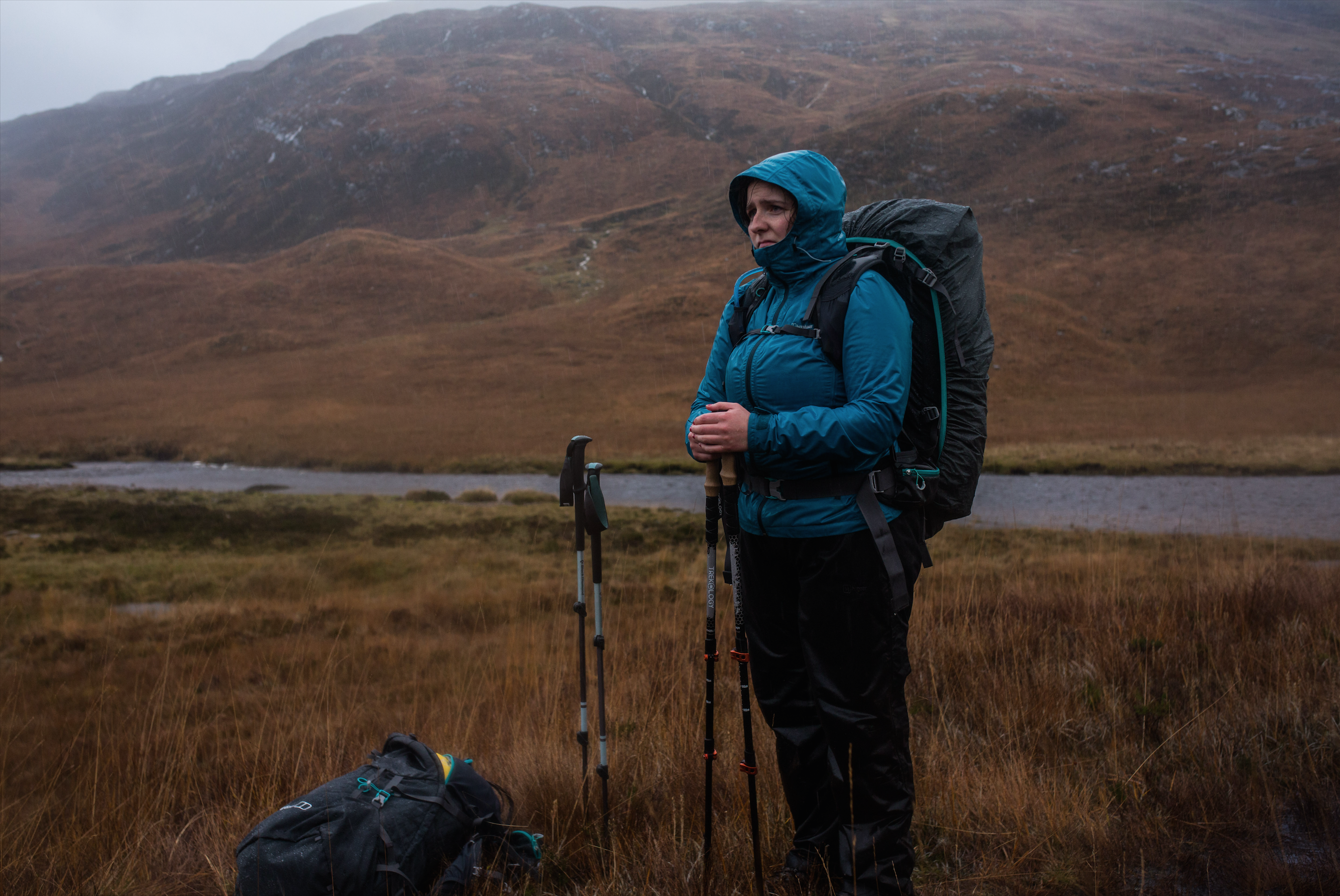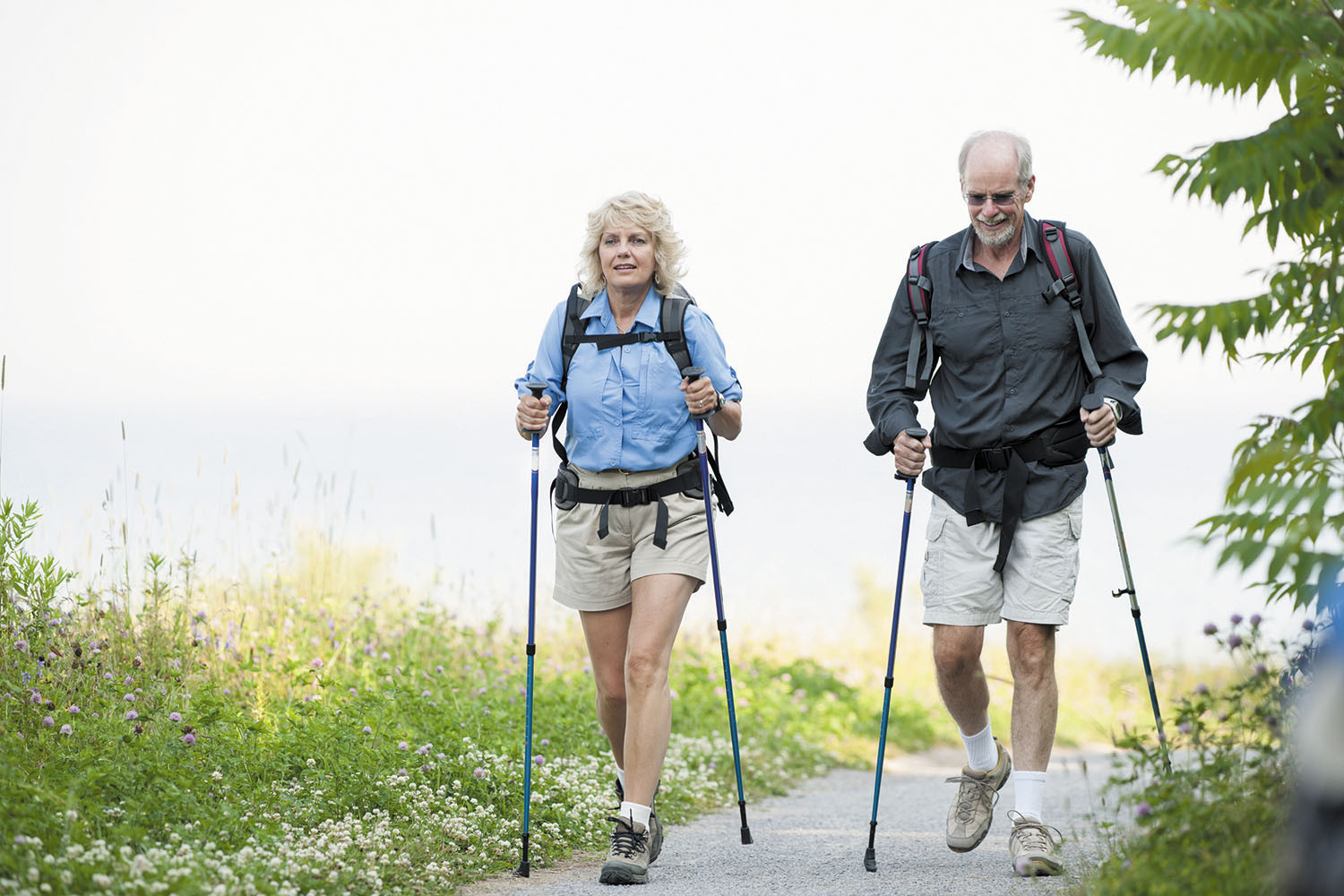Trekking poles Advantages: enhance balance and reduce stress on the joints during hikes. They assist in maintaining a consistent rhythm and pace.
Trekking poles, extending the capabilities of a hiker, significantly transform the trekking experience by offering a multitude of benefits. These sturdy accessories not only lend a hand in navigating tricky terrain but also distribute the weight of a backpack, alleviating the impact on the legs and lower back.
As a hiker’s loyal companions, trekking poles contribute to a safer journey, reducing the likelihood of slips and falls by providing additional points of contact with the ground. Engaging the arms and shoulders, also ensures a full-body workout, promoting overall endurance. Ideal for adventurers of all levels, trekking poles are the unsung heroes of the trails, making them an essential element of any hiker’s gear list.

Credit: www.thegreatoutdoorsmag.com
Trekking Poles Advantages: Enhancing Your Hiking Experience
Trekking poles transform hiking into a full-body workout. They aid balance on uneven trails. They also decrease the load on knees during descents. This results in a more enjoyable trekking experience.
A Brief History Of Trekking Poles
Trekking poles have evolved from rudimentary walking sticks. Ancient travelers once used branches to help them walk. Modern poles now feature advanced materials like aluminum and carbon fiber. Organizations like the Appalachian Mountain Club promoted their use in the 20th century, appreciating their benefits on tough hikes.
What Are Trekking Poles?
Trekking poles, or hiking sticks, are a pair of adjustable rods that hikers use for support. Each pole has a grip and strap for the hands and a tip that makes contact with the ground. They often have rubber caps for hard surfaces and wider baskets for soft ground or snow.
Key advantages of trekking poles include:
- Improved stability on mixed terrain
- Reduced impact on ankles, knees, and hips
- Increased speed and endurance on trails
- Better posture, engaging core muscles
- Assistance with crossing streams and wet areas
The Benefits Of Using Trekking Poles
Embarking on a hike soon? Consider the value trekking poles can add to your adventure. These nifty tools do more than just look professional; they significantly enhance the trekking experience. Below, we dive into how trekking poles prove to be an essential piece of gear for every avid hiker.
Improved Balance And Stability
Face uneven terrain with confidence as trekking poles offer the extra support you need. They act like a second pair of legs. They make sure you stay upright and safe. No matter the slope or ruggedness, the poles are there to keep you balanced.
Reduced Impact On Joints
It’s a workout, but your knees should not bear the brunt. Trekking poles absorb a portion of the load with each step, easing the pressure. This means hips, knees, and ankles get a break. Say goodbye to post-hike joint pains!
Increased Speed And Endurance
Want to move faster and hike longer? Trekking poles make it possible. They help propel you forward and take on some of the work. You maintain a steady pace while conserving energy. It’s like having an extra gear on uphill climbs.
Assistance On Mixed Terrain
Forests, streams, rocky paths, and trekking poles adapt. They provide the needed push to get up steep areas. They offer a brace on descents and a probe for puddles or unclear paths. You’ll feel ready to tackle any path that lies ahead.
Choosing The Right Trekking Poles
Choosing the right trekking poles is like picking the perfect hiking companion. The best ones enhance your stability, reduce strain on your joints, and help you move faster. Let us dive into the main features to consider before making your selection.
Material And Weight Considerations
Trekking poles come in various materials, each affecting the pole’s weight and strength. Aluminum poles are durable and slightly heavier, ideal for rugged terrain. Carbon fiber poles excel in lightness, perfect for long treks where every ounce matters. Compare these features with care:
| Material | Weight | Durability |
|---|---|---|
| Aluminum | Heavier | High |
| Carbon Fiber | Lighter | Medium-High |
Adjustability And Locking Mechanisms
- Adjustable poles let you alter the length to suit various terrains.
- Non-adjustable poles have a fixed length and require no setup.
Look for reliable locking mechanisms such as twist locks or lever locks to ensure your poles stay at the desired height.
Grip Types And Wrist Straps
Grips should offer comfort and prevent blisters. Cork grips conform to your hand and absorb sweat, while foam grips are soft and lightweight. Rubber grips are best for cold weather.
Wrist straps reduce hand fatigue. Seek straps that are easily adjustable, and padded, and allow for a snug fit.
Mastering Pole Techniques
Trekking poles can transform your hikes into more efficient workouts. Once you get the techniques down, you’ll move with greater stability and confidence. Understanding how to use your trekking poles properly will make a big difference on your trails. Let’s dive into the art of mastering pole techniques for your adventure:
Correct Pole Length Setting
The right pole length offers you optimal support and comfort. Set them:
| Terrain Type | Pole Length |
|---|---|
| Flat ground | Elbows at 90 degrees |
| Uphill | Shorten poles |
| Downhill | Lengthen poles |
Adjust the length so your arm makes a 90-degree angle when you hold the pole with its tip on the ground next to your foot.
Pole Placement And Walking Rhythm
- Alternate your steps with your poles.
- Place the pole opposite your forward foot.
- Maintain a steady rhythm; help maintain momentum.
- Keep poles close to your body to avoid tripping.
Focus on a pattern where each pole touch coincides with the opposite foot’s stride.
Navigating Uphill And Downhill Sections
Mastering slopes is crucial:
- On uphill treks, keep poles in front to pull yourself up.
- Lean forward slightly, and take small steps for efficiency.
- Going downhill, use poles to brace your descent.
- Redistribute weight to avoid knee strain.
Remember, use shorter poles for going up, and longer for going down.
Caring For Your Trekking Poles
Proper care keeps your trekking poles ready for your next adventure. Just like any trusty companion, they deserve a bit of attention. This attention to maintenance, repair, and storage will secure their longevity and performance. Let’s discover how simple steps can prolong the life of trekking poles.
Routine Maintenance Tips
- Clean poles after each hike using a damp cloth.
- Check for loose parts and tighten them.
- Inspect for damage, focusing on pole tips and locks.
- Dry poles completely before storing them.
- Lubricate locks for smooth operation.
Repairing Common Wear And Tear
| Issue | Solution |
|---|---|
| worn tips | Replace with new tips |
| Loose parts | Tighten or replace if needed |
| Broken locks | Use the manufacturer’s replacement kit |
Proper Storage And Transport
- Store in a cool, dry place.
- Keep poles extended to preserve tension.
- Use a carry bag for transport to avoid damage.
- Avoid storing poles with locked tension.
Credit: www.rei.com
Common Misconceptions About Trekking Poles
Many hikers and outdoor enthusiasts have yet to embrace the full potential of trekking poles. Often, their reluctance stems from misconceptions about these helpful hiking companions.
Myth Vs. Reality: Can Anyone Use Them?
One common myth suggests that trekking poles are only for experts or older hikers. The truth is quite the opposite. Whether you’re young or old, an amateur or a seasoned trekker, trekking poles offer benefits for all.
- Increased stability on uneven terrains
- Reduced impact on knees during descents
- Improved balance when crossing streams or navigating slippery surfaces
Unpacking Beliefs About Speed And Efficiency
Some believe trekking poles slow hikers down. This is a misunderstanding. Proper use of trekking poles can enhance your hiking pace and endurance.
| Without Poles | With Poles |
|---|---|
| More energy expended on leg muscles | Arms and legs distribute effort |
| Higher risk of slips and falls | Four points of contact provide support |
| Possible slower uphill progress | Improved propulsion aids uphill movement |
Correctly utilizing trekking poles makes for a more efficient and faster hike, helping you cover distances with less fatigue.

Credit: www.amazon.com
Frequently Asked Questions Of Trekking Poles Advantages
Do Trekking Poles Make A Difference?
Yes, trekking poles significantly aid balance, reduce strain on joints, and can enhance hiking endurance and speed. They distribute weight more evenly during ascents and descents, offering stability on uneven terrain.
What’s The Point Of Trekking Poles?
Trekking poles enhance stability and reduce impact on joints while hiking. They assist with balance on uneven terrain and aid in distributing load during ascents and descents.
What Are The Pros And Cons Of Hiking Poles?
Pros of hiking poles include improved balance, reduced stress on joints, and aid in uphill climbs. Cons comprise added weight to carry and potential hindrance in dense brush or technical terrain.
Which Is Better A Walking Stick Or Trekking Poles?
Trekking poles surpass walking sticks for improved stability and reduced stress on joints during hikes across varied terrains. They offer a balanced workout by engaging the upper body.
Conclusion
Embracing the benefits of trekking poles ensures a safer and more efficient hiking adventure. Their use significantly reduces the impact on joints, increases stability, and boosts your pacing when navigating rugged terrain. Whether you’re a seasoned hiker or a casual walker, consider the advantages of trekking poles for your next outdoor excursion.
They just might transform the way you experience the trails.

